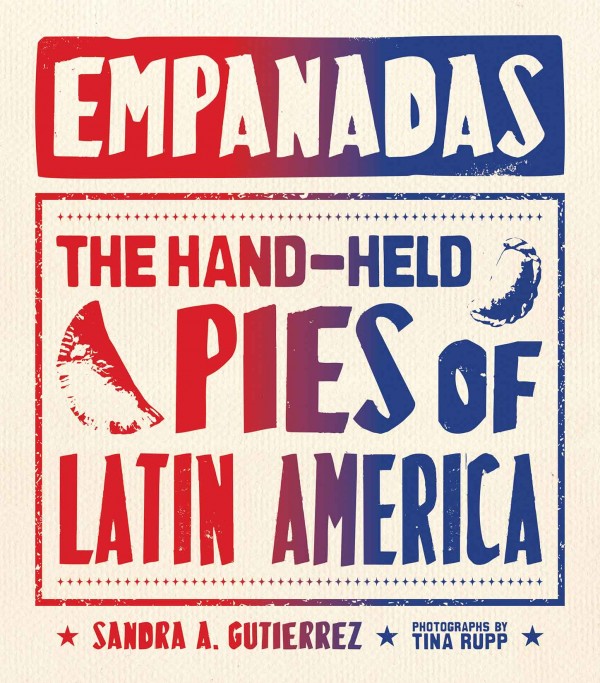
EMPANADAS: The Hand-Held Pies of Latin America
Sandra Gutierrez Tina Rupp
Abrams Books
April 2015
$19.95/hardcover
ISBN: 978-1617691430
Sandra Gutierrez Tina Rupp
Abrams Books
April 2015
$19.95/hardcover
ISBN: 978-1617691430
Sandra Gutierrez is an expert on the subject of Latin American cuisine, its history and evolution. Sandra is the former food editor for The Cary News and her articles and recipes have been featured in Relish, Cooking Club of America, Cooking Pleasures, TASTE-FULL, Easy, USA Today, NBC Latino, Mamiverse, Ducklings, FOX Latino, Edible Piedmont, and in newspapers across the country. She is the author of The New Southern-Latino Table: Recipes that Bring Together the Bold and Beloved Flavors of Latin America & The American South and Latin American Street Food: The Best Flavors of Markets, Beaches, and Roadside Stands from Mexico to Argentina.
Recognized as a leading expert on Latin cuisine, Sandra was a presenter on the subject of Latin American food at the conference of the International Association of Culinary Professionals (IACP) in 2012 and was a cookbook judge for the 2013 James Beard Awards. As a bilingual chef, Sandra is a Chef Ambassador for American Roland Foods. She teaches classes at Williams-Sonoma, which have sold out, and hosts her own blog at http://www.Sandraskitchen.typepad.com.
Found from New York to Los Angeles, from Mexico to Brazil and into the Latin Caribbean, empanadas are the most widely eaten hand-held pies in the world. They can be filled with a marvelous array of ingredients featuring simple, vibrant flavors and can make a perfect snack, everyday meal, decadent dessert, or great party fare. EMPANADAS offers a collection of the most delicious recipes and essential tips on creating the perfect mini pie for any occasion, from Argentinian cheesy spinach empanadas, crispy Mexican chorizo and potato pies with tomatillo salsa, and flaky Brazilian shrimp and tomato empanadas to Costa Rican empanaditas stuffed with gooey pineapple jam. With an introduction on the history of empanadas, a lesson on dough types and folding techniques, 60 succulent recipes, and mouthwatering color photographs throughout, EMPANADAS is a beautiful, practical, and definitive guide to making, serving, and enjoying everyone’s favorite hand-held pie.